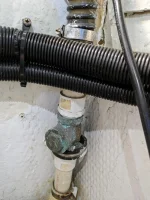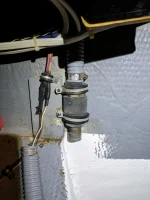Eddieclemons
Well-known member
- Joined
- Jul 14, 2019
- Messages
- 572
- Status
- OWNER - I own a Hatteras Yacht
- Hatteras Model
- 52' CONVERTIBLE (1983 - 1990)
[FONT="]Bilge check valves, Yes or No??
Currently replacing bilge pumps, and hoses.
1. One is in the forward bilge, usually a AC condensation drain sump.
2. 2nd is forward in the ER between the engines. Usually a AC condensation drain sump.
Should they be there or no?[/FONT]
Currently replacing bilge pumps, and hoses.
1. One is in the forward bilge, usually a AC condensation drain sump.
2. 2nd is forward in the ER between the engines. Usually a AC condensation drain sump.
Should they be there or no?[/FONT]



